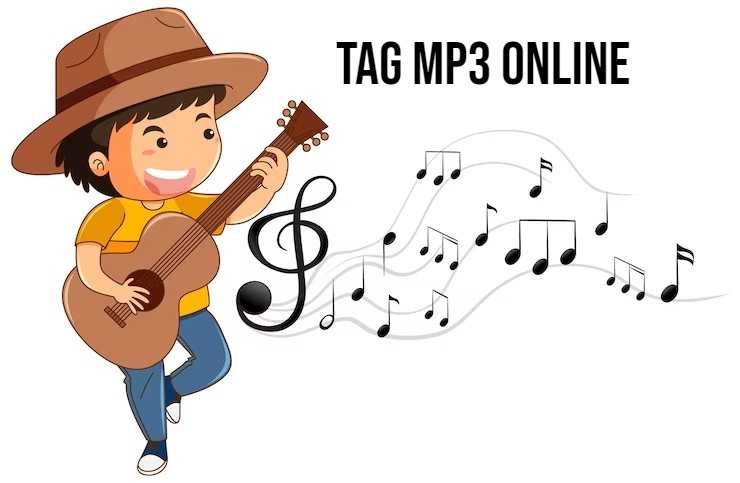Music has always been an integral part of our daily lives, from listening to our favorite tunes while working out to creating the perfect playlist for a long road trip. With the advent of digital music and the widespread use of MP3 files, it's easier than ever to carry your entire music library with you wherever you go. However, managing and organizing a large collection of MP3 files can be a daunting task, especially when the file names are inconsistent, or the tags are missing or incorrect.
This is where MP3 tag editing comes in. By editing the metadata tags within your MP3 files, you can easily organize and enhance your music collection, making it easier to find the tracks you're looking for and creating a more enjoyable listening experience. Whether you're a music enthusiast with thousands of files or just starting out with a small collection, understanding how to edit MP3 tags is an essential skill.
In this ultimate guide, we'll explore everything you need to know about MP3 tag editing, from the basics of what tags are and how they work, to advanced techniques for mass editing and automating the process. By the end of this guide, you'll have the knowledge and tools you need to take control of your music collection and enjoy your tunes like never before.

Why MP3 Tag Editing Matters ?
MP3 tag editing is an essential process for organizing and managing your music collection. Tags are metadata attached to digital audio files, containing information such as the artist name, album title, track number, and genre. These tags help you to identify and sort your music files easily, making it easier to find and play your favorite songs.
Without proper tagging, your music collection can become disorganized and hard to manage. You might have multiple versions of the same song or album, and it can be challenging to differentiate them. Moreover, incorrect or missing tags can cause problems when you try to sync your music with different devices or software.
By editing your MP3 tags, you can correct any errors, add missing information, or customize the tags to your preferences. You can also use tagging to create playlists or sort your music by genre, year, or any other criteria. MP3 tag editing is a simple and effective way to keep your music library organized and enjoyable to listen to.
Understanding MP3 Tags: What They Are and How They Work
MP3 tags are metadata embedded in digital audio files that contain information about the audio content, such as artist name, album title, track number, and genre. These tags help to identify and sort audio files quickly and easily. MP3 tags are essential for organizing and managing your music collection, and they can be edited and customized to suit your preferences.
Top MP3 Tag Editors for Windows, Mac, and Online
There are many MP3 tag editors available for Windows, Mac, and online. Some of the top editors include:
- Tag Mp3: Tag Mp3 online is one of the top MP3 tag editors available for users in the USA. It is open-source software that allows you to edit and manage your MP3 tags in a user-friendly interface. With advanced algorithms and a vast music database, MusicBrainz Picard can automatically identify and tag your music files accurately.
- Kid3: a cross-platform MP3 tag editor that supports batch editing and allows you to import and export tags in various formats.
- Online MP3 tag editors: websites like AudioTag and MP3TagOnline allow you to edit MP3 tags directly from your web browser.
How to Edit MP3 Tags: Step-by-Step Guide
To edit MP3 tags, follow these steps:
- Open your preferred MP3 tag editor.
- Load the audio file(s) you want to edit.
- Review the existing tags and make any necessary changes.
- Save the changes to the audio file.
Advanced MP3 Tag Editing: Adding Cover Art, Lyrics, and More
In addition to basic tagging, you can also enhance your audio files by adding cover art, lyrics, and other metadata. To add cover art, you can use an image file in JPEG or PNG format and embed it in the audio file using your MP3 tag editor. To add lyrics or other metadata, use the appropriate fields in your tag editor and save the changes to the audio file.
Best Practices for MP3 Tag Editing: Tips and Tricks
To make the most of your MP3 tag editing, consider the following tips and tricks:
Use consistent naming conventions for your audio files and tags.
- Include all relevant information in your tags, such as album artist, year, and track numbers.
- Use high-quality cover art and embed it directly in your audio files.
- Consider using automated tagging software to save time and ensure accuracy.
- Back up your audio files before making any changes to avoid losing data.
Conclusion: Taking Your Music Collection to the Next Level
MP3 tag editing is an essential tool for organizing and managing your music collection. By using one of the top MP3 tag editors, following a step-by-step guide, and utilizing advanced tagging techniques, you can take your music collection to the next level. Remember to follow best practices, such as using consistent naming conventions and backing up your files, to ensure a well-organized and enjoyable listening experience.



